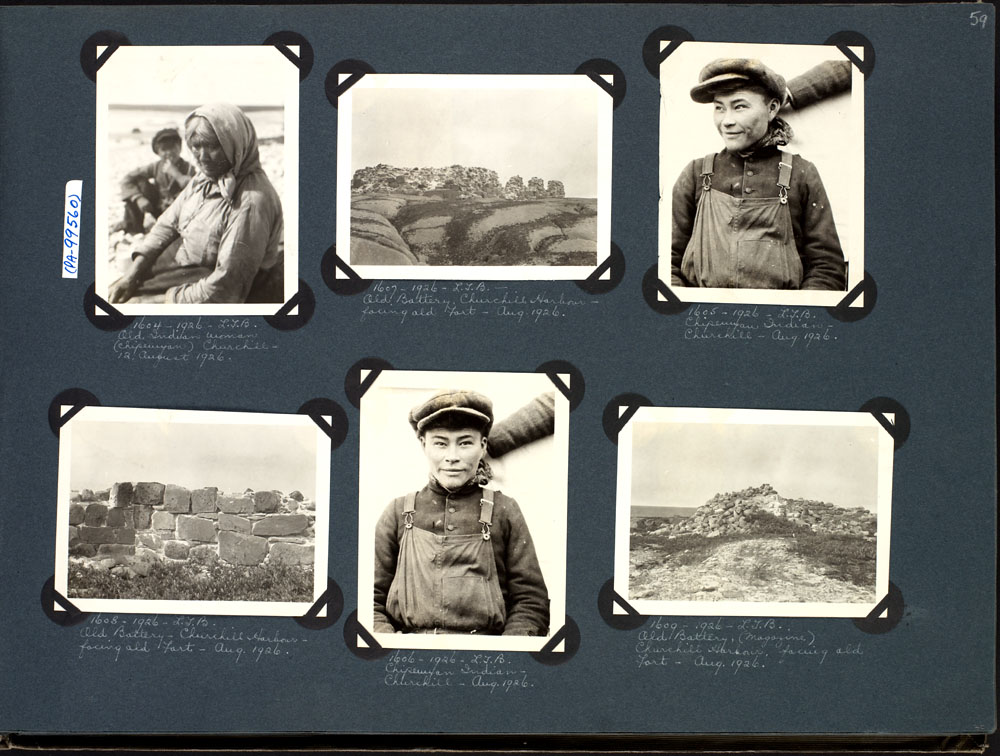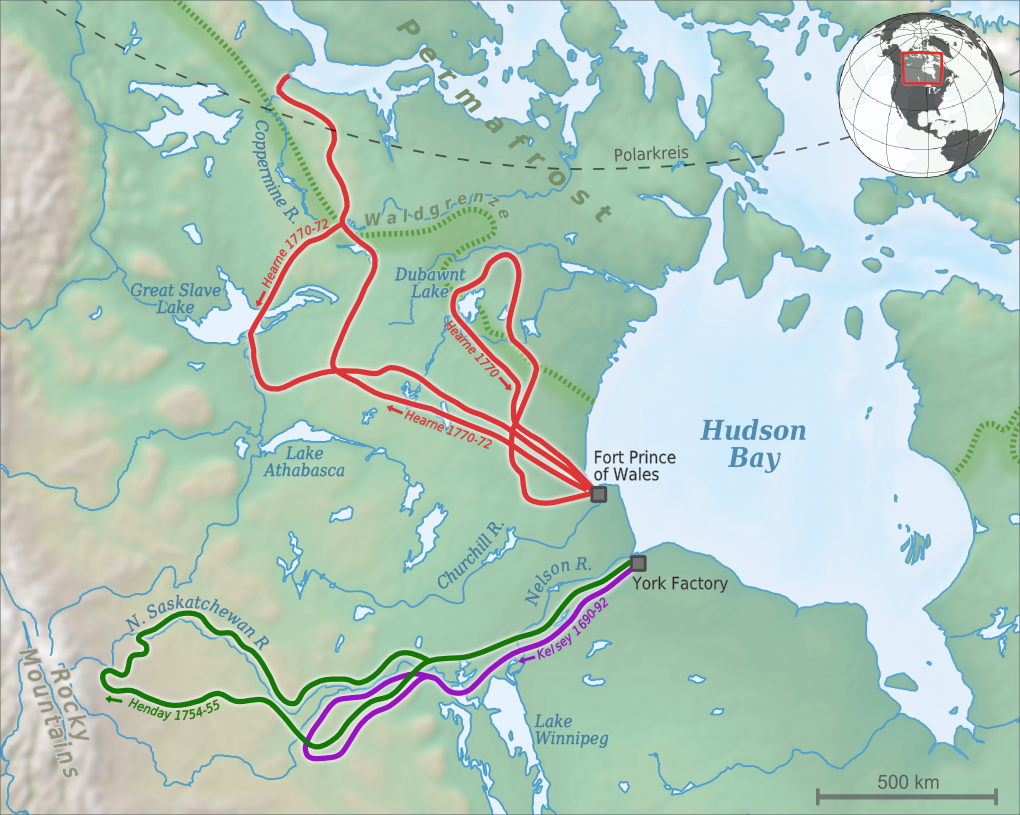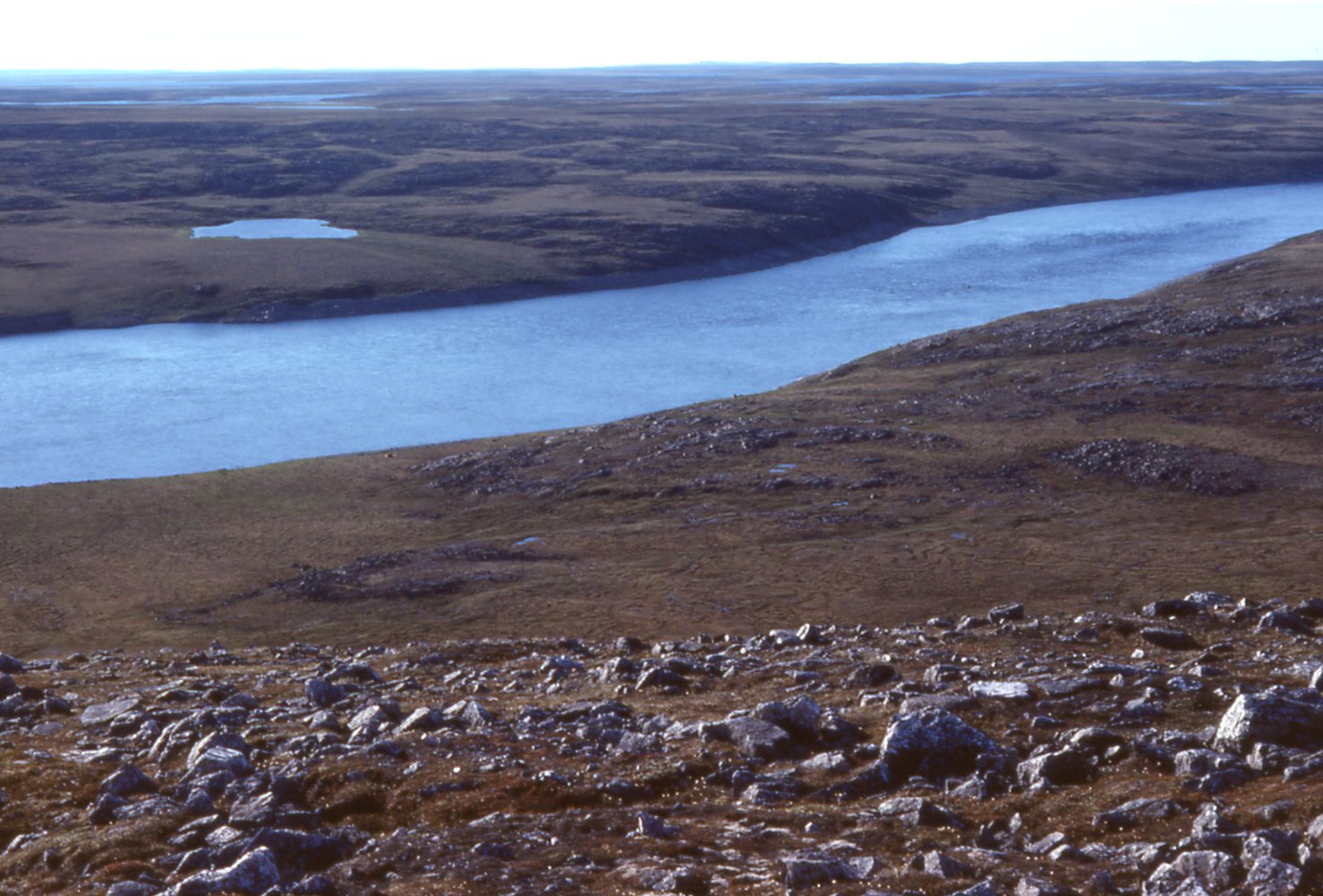|
Yellowknives Dene
The Yellowknives, Yellow Knives, Copper Indians, Red Knives or T'atsaot'ine ( Dogrib: ''T'satsąot'ınę'') are indigenous peoples of Canada, one of the five main groups of the First Nations Dene who live in the Northwest Territories of Canada. The name, which is also the source for the later community of Yellowknife, derives from the colour of the tools made from copper deposits. History The historic Yellowknives lived north and northeast of the Great Slave Lake (''Tinde'e'' - "Great Lake") around the Yellowknife River and Yellowknife Bay (''Weledeh Cho'' - " Inconnu River") and northward along the Coppermine River, northeast to the Back River (''Thlewechodyeth'' or ''Thlew-ee-choh-desseth'' - "Great Fish River") and east to the Thelon River (or ''Akilinik''). They used the major rivers of their traditional land as routes for travel and trade as far east as Hudson Bay, where early European explorers such as Samuel Hearne encountered them in the 1770s. The Yellowknives hel ... [...More Info...] [...Related Items...] OR: [Wikipedia] [Google] [Baidu] |
Yellowknife River
The Yellowknife River is a river in the Northwest Territories, Canada. It flows south and empties into Yellowknife Bay, part of Great Slave Lake, at the city of Yellowknife. The lake is drained by the Mackenzie River into the Arctic Ocean as part of the largest drainage basin in Canada. The name of the river derives from the Yellowknives Dene, a First Nations people who have lived in the area for thousands of years. The city of Yellowknife draws its water supply from the river. See also *List of rivers of the Northwest Territories This is a list of rivers that are in whole or partly in the Northwest Territories, Canada. By watershed Arctic Ocean watershed * Back River ( Nunavut) ;Canadian Arctic Archipelago *Hornaday River (Nunavut) * Kagloryuak River (Nunavut) * Nanoo ... References Rivers of the Northwest Territories {{NorthwestTerritories-river-stub ... [...More Info...] [...Related Items...] OR: [Wikipedia] [Google] [Baidu] |
Dettah
Dettah, sometimes, incorrectly, as ''Detah'', is a First Nations community in the North Slave Region of the Northwest Territories, Canada. Located just southeast of the capital of Yellowknife, it is a drive from that city by ice road across the north arm of Great Slave Lake in winter or a drive via the Ingraham Trail, year-round. The name means 'Burnt Point' in the Dogrib language and refers to a traditional fishing camp used by the Dene for hundreds of years. Demographics In the 2021 Canadian census conducted by Statistics Canada, Dettah recorded a population of 192 living in 79 of its 85 total private dwellings, a change of from its 2016 population of 219. With a land area of , it had a population density of in 2021. Both it and Ndilǫ are the communities of the Yellowknives. Dettah is represented by the Yellowknives Dene First Nation (Dettah) and are part of the Akaitcho Territory Government. [...More Info...] [...Related Items...] OR: [Wikipedia] [Google] [Baidu] |
Chipewyan
The Chipewyan ( , also called ''Denésoliné'' or ''Dënesųłı̨né'' or ''Dënë Sųłınë́'', meaning "the original/real people") are a Dene Indigenous Canadian people of the Athabaskan language family, whose ancestors are identified with the Taltheilei Shale archaeological tradition. They are part of the Northern Athabascan group of peoples, and come from what is now Western Canada. Terminology The term ''Chipewyan'' (ᒌᐘᔮᐣ) is a Cree exonym meaning ''pointed hides'', referring to the design of their parkas. The French-speaking missionaries to the northwest of the Red River Colony referred to the Chipewyan people as Montagnais in their documents written in French. Montagnais simply means "mountain people" or "highlanders" in French and has been applied to many unrelated nations across North America over time. For example the Neenolino Innu of northern Quebec are also called "Montagnais". Demographics Chipewyan peoples live in the region spanning the w ... [...More Info...] [...Related Items...] OR: [Wikipedia] [Google] [Baidu] |
Arctic Ocean
The Arctic Ocean is the smallest and shallowest of the world's five major oceans. It spans an area of approximately and is known as the coldest of all the oceans. The International Hydrographic Organization (IHO) recognizes it as an ocean, although some oceanographers call it the Arctic Mediterranean Sea. It has been described approximately as an estuary of the Atlantic Ocean. It is also seen as the northernmost part of the all-encompassing World Ocean. The Arctic Ocean includes the North Pole region in the middle of the Northern Hemisphere and extends south to about 60°N. The Arctic Ocean is surrounded by Eurasia and North America, and the borders follow topographic features: the Bering Strait on the Pacific side and the Greenland Scotland Ridge on the Atlantic side. It is mostly covered by sea ice throughout the year and almost completely in winter. The Arctic Ocean's surface temperature and salinity vary seasonally as the ice cover melts and freezes; its salinity is t ... [...More Info...] [...Related Items...] OR: [Wikipedia] [Google] [Baidu] |
Canadian Arctic Tundra
The Canadian Arctic tundra is a biogeography, biogeographic designation for Northern Canada's terrain generally lying north of the tree line or Taiga, boreal forest, that corresponds with the Scandinavian Montane Birch forest and grasslands, Scandinavian Alpine tundra to the east and the Siberian Arctic tundra to the west inside the Arctic Circle, circumpolar Köppen climate classification, tundra belt of the Northern Hemisphere. Canada's northern territories encompass a total area of , 26% of the country's landmass that includes the Arctic coastal tundra, the Arctic Lowlands and the Innuitian Region in the High Arctic. Tundra terrain accounts for approximately in Yukon, the Northwest Territories, in Nunavut, north-eastern Manitoba, northern Ontario, northern Quebec, northern Labrador and the islands of the Arctic Archipelago, of which Baffin Island with is the largest. Canada's tundra is characterized by extreme climatic conditions with year-round permafrost, frozen grounds, l ... [...More Info...] [...Related Items...] OR: [Wikipedia] [Google] [Baidu] |
Samuel Hearne
Samuel Hearne (February 1745 – November 1792) was an English explorer, fur-trader, author, and naturalist. He was the first European to make an overland excursion across northern Canada to the Arctic Ocean, actually Coronation Gulf, via the Coppermine River. In 1774, Hearne built Cumberland House for the Hudson's Bay Company, its second interior trading post after Henley House and the first permanent settlement in present Saskatchewan. Biography Samuel Hearne was born in February 1745 in London. Hearne's father was Secretary of the Waterworks of London Bridge, who died in 1748. His mother's name was Diana, and his sister's name was Sarah, three years younger than Samuel. Samuel Hearne joined the British Royal Navy in 1756 at the age of 11 as midshipman under the fighting captain Samuel Hood. He remained with Hood during the Seven Years' War, seeing considerable action during the conflict, including the bombardment of Le Havre. At the end of the Seven Years' War, having serve ... [...More Info...] [...Related Items...] OR: [Wikipedia] [Google] [Baidu] |
Hudson Bay
Hudson Bay ( crj, text=ᐐᓂᐯᒄ, translit=Wînipekw; crl, text=ᐐᓂᐹᒄ, translit=Wînipâkw; iu, text=ᑲᖏᖅᓱᐊᓗᒃ ᐃᓗᐊ, translit=Kangiqsualuk ilua or iu, text=ᑕᓯᐅᔭᕐᔪᐊᖅ, translit=Tasiujarjuaq; french: baie d'Hudson), sometimes called Hudson's Bay (usually historically), is a large body of saltwater in northeastern Canada with a surface area of . It is located north of Ontario, west of Quebec, northeast of Manitoba and southeast of Nunavut, but politically entirely part of Nunavut. Although not geographically apparent, it is for climatic reasons considered to be a marginal sea of the Arctic Ocean. It Hudson Bay drainage basin, drains a very large area, about , that includes parts of southeastern Nunavut, Alberta, Saskatchewan, Ontario, Quebec, all of Manitoba, and parts of the U.S. states of North Dakota, South Dakota, Minnesota, and Montana. Hudson Bay's southern arm is called James Bay. The Cree language, Eastern Cree name for Hudson an ... [...More Info...] [...Related Items...] OR: [Wikipedia] [Google] [Baidu] |
Thelon River
The Thelon River ('' iu, Akilinik'', "on the other side") stretches across northern Canada. Its source is Whitefish Lake in the Northwest Territories, and it flows east to Baker Lake in Nunavut. The Thelon ultimately drains into Hudson Bay at Chesterfield Inlet. Geography The drainage basin of the Thelon River encompasses some . Located far from almost all human development, the Thelon and its surroundings are entirely pristine wilderness. It has been described as Canada's remotest river. The river has a width of up to a kilometre (0.6 mi) along much of its lower section, widening into Beverly, Aberdeen, and Schultz Lakes about upstream from its mouth at Baker Lake. Fauna Approximately 100 moose and more than 2,000 muskoxen forage on the land around the Thelon. 300,000 migrating barren-ground caribou cross the river every fall and spring. History Inuit - including Caribou Inuit and Copper Inuit - have long occupied the sparsely-populated lands around the Thelon. Ar ... [...More Info...] [...Related Items...] OR: [Wikipedia] [Google] [Baidu] |
The Historica Dominion Institute
Historica Canada is a Canadian charitable organization dedicated to promoting the country's history and citizenship. All of its programs are offered bilingually and reach more than 28 million Canadians annually. A registered national charitable organization, Historica Canada was originally established as the Historica-Dominion Institute following a 2009 merger of two existing groups—the Historica Foundation of Canada and The Dominion Institute—and changed to its present name in September 2013. Anthony Wilson-Smith has been president and CEO of the organization since September 2012, with the board of directors being chaired () by First National Financial-co-founder Stephen Smith. Some of the organizations best-known programs include its collection of ''Heritage Minutes''—60-second vignettes re-enacting important and remarkable incidents in Canada's history—and ''The Canadian Encyclopedia''. Historica Canada regularly conducts public opinion polls and creates educational ... [...More Info...] [...Related Items...] OR: [Wikipedia] [Google] [Baidu] |
The Canadian Encyclopedia
''The Canadian Encyclopedia'' (TCE; french: L'Encyclopédie canadienne) is the national encyclopedia of Canada, published online by the Toronto-based historical organization Historica Canada, with the support of Canadian Heritage. Available for free online in both English and French, ''The Canadian Encyclopedia'' includes more than 19,500 articles in both languages on numerous subjects including history, popular culture, events, people, places, politics, arts, First Nations, sports and science. The website also provides access to the ''Encyclopedia of Music in Canada'', the ''Canadian Encyclopedia Junior Edition'', ''Maclean's'' magazine articles, and ''Timelines of Canadian History''. , over 700,000 volumes of the print version of ''TCE'' have been sold and over 6 million people visit ''TCE'''s website yearly. History Background While attempts had been made to compile encyclopedic material on aspects of Canada, ''Canada: An Encyclopaedia of the Country'' (1898–1900), ... [...More Info...] [...Related Items...] OR: [Wikipedia] [Google] [Baidu] |
Back River (Nunavut)
The Back River, formerly Back's River ( Dogrib: ''Thlewechodyeth'', Inuktitut: ''Haningayok'', or Great Fish River), is the 20th longest Canadian river and is located in the Northwest Territories and Nunavut. It rises at an unnamed lake in the North Slave Region of the Northwest Territories and flows more than mostly through the Kivalliq Region, Nunavut, to its mouth at the Arctic Ocean in the Kitikmeot Region of Nunavut. Course The river begins at the outflow of an unnamed lake at an elevation of and flows west into Sussex Lake, then north to Muskox Lake, at the border between the Northwest Territories and the Kivalliq Region, Nunavut, where it takes in the left tributary Icy River. It flows over the Muskox Rapids, takes in the left tributary Contwoyto River, and heads east through the Heywood Range. The Back River heads over the Malley Rapids, takes in the left tributary Siorak River and enters the long lake-expansion Lake Beechey in a southeast direction. It heads east ... [...More Info...] [...Related Items...] OR: [Wikipedia] [Google] [Baidu] |





